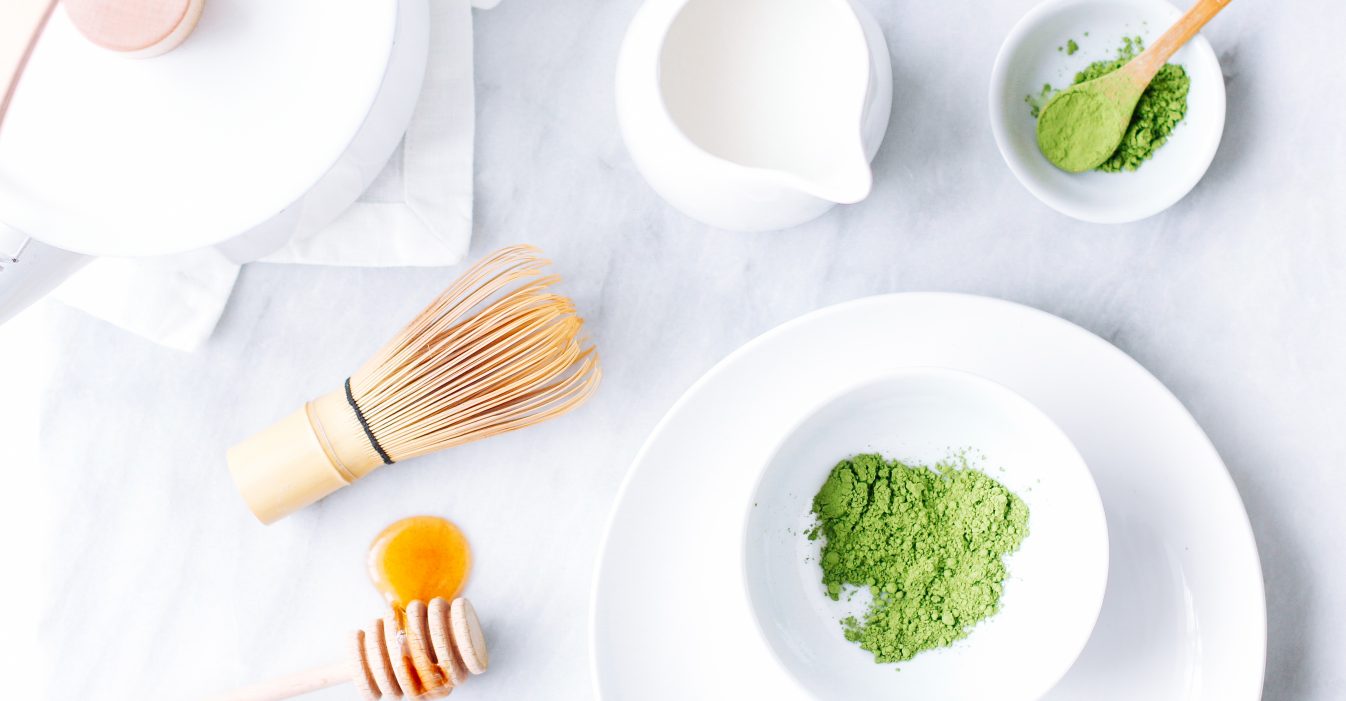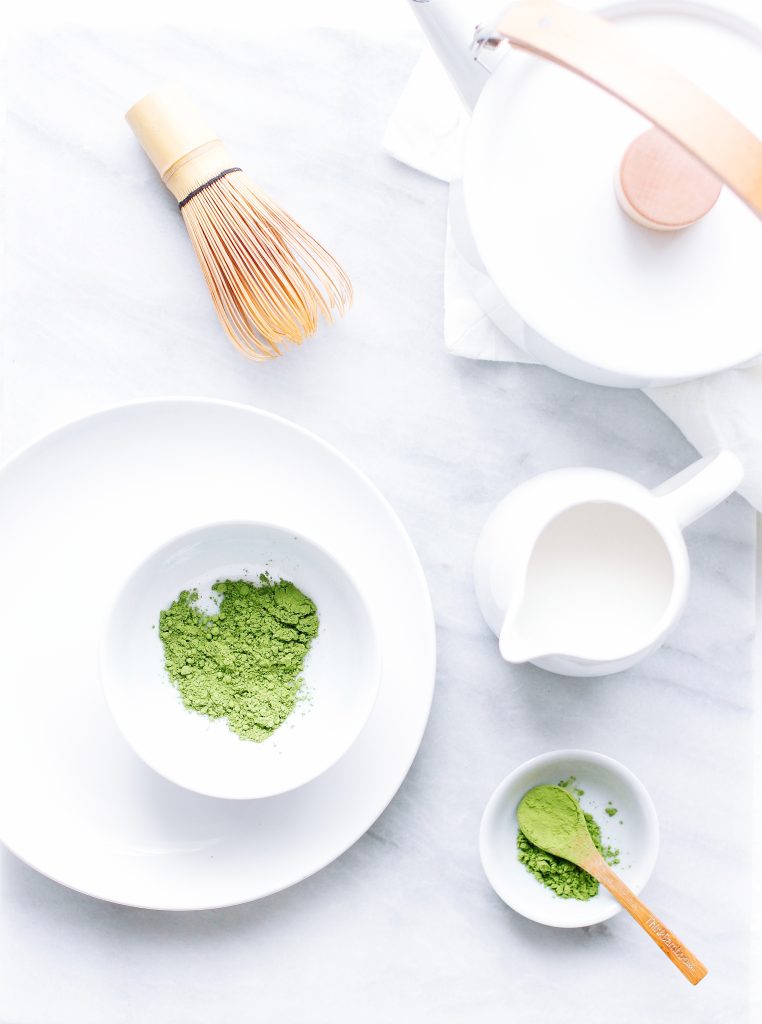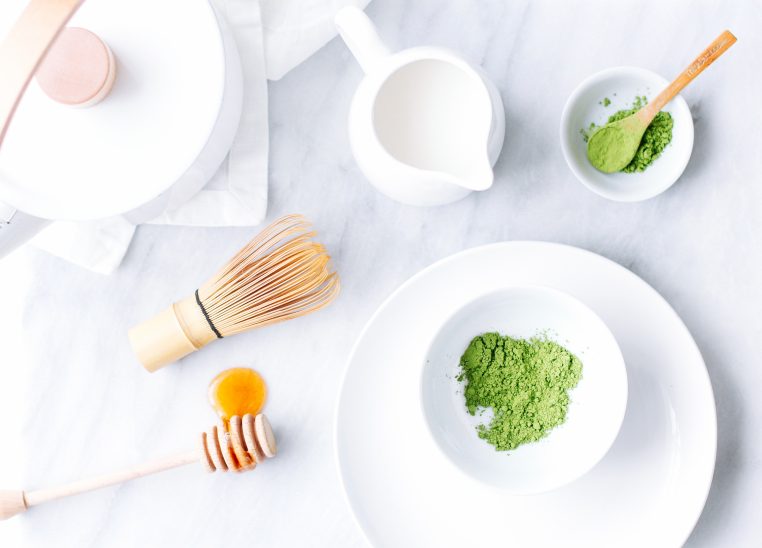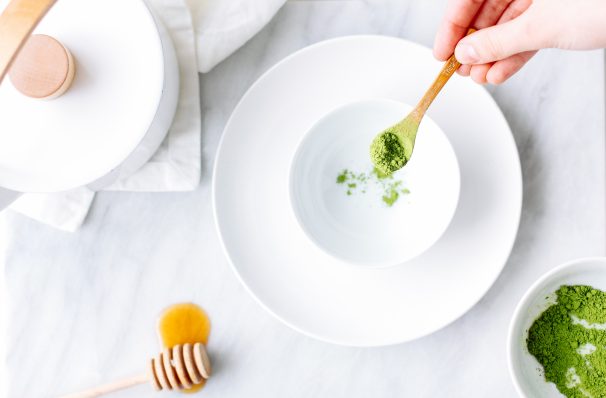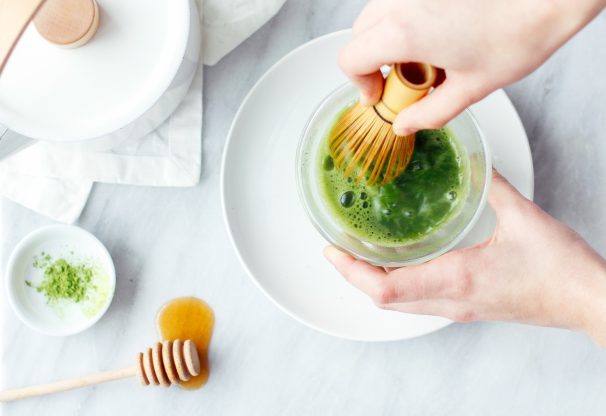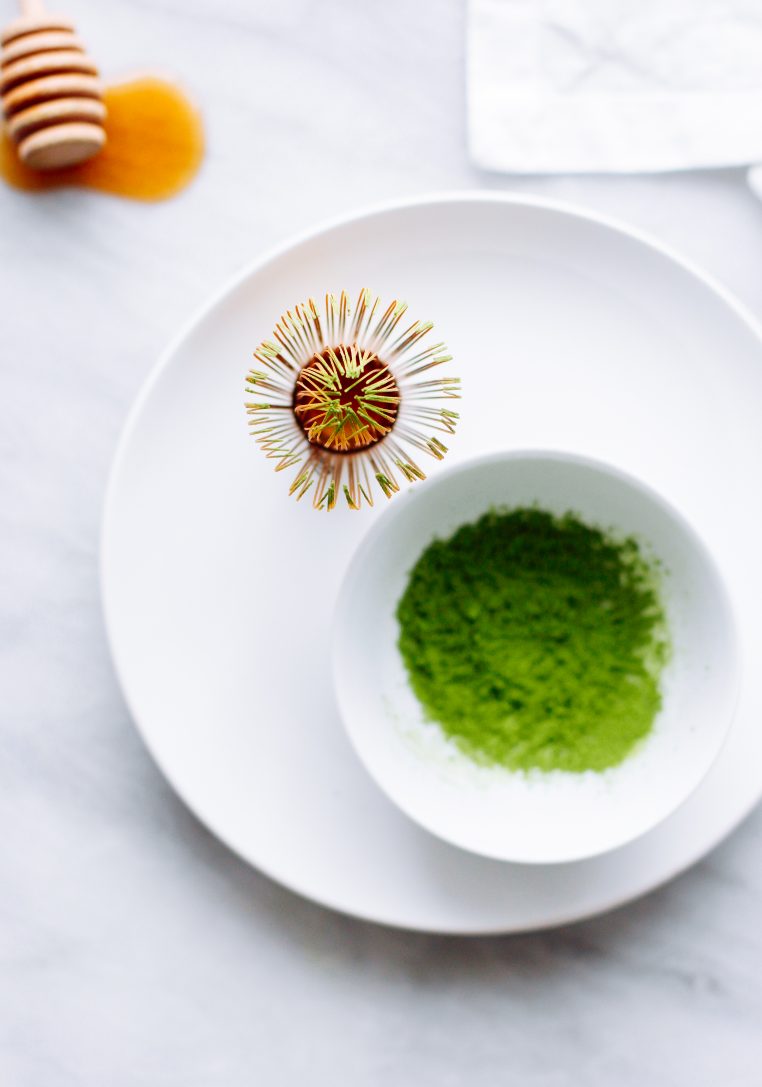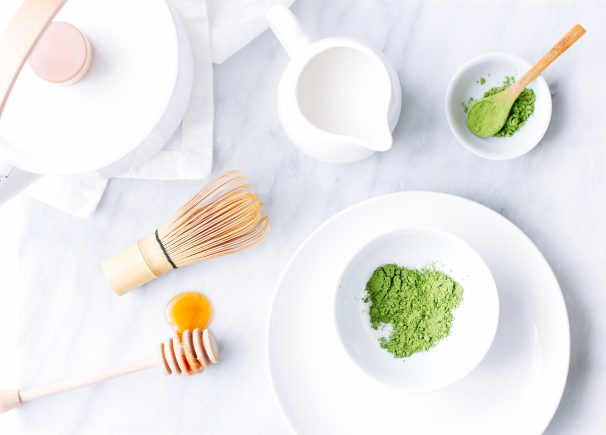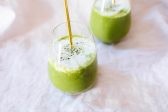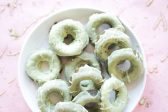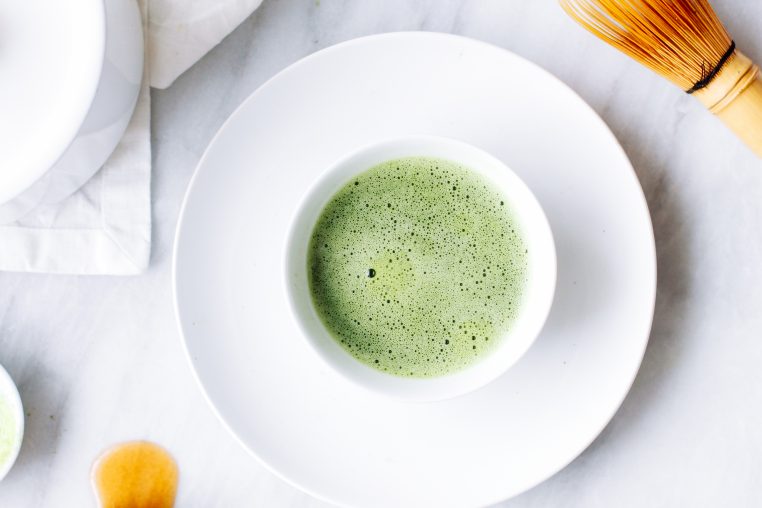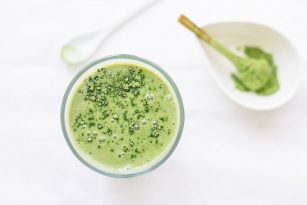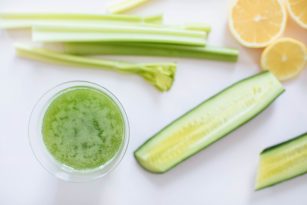A delicious, dairy-free matcha tea latte recipe using creamy coconut milk and high-quality matcha tea.
Whenever I share a picture on Instagram of one of my matcha tea lattes, you guys go crazy and ask for the recipe or a how-to guide on how to make them at home for yourselves.
Well, I listened and am here to share my favorite matcha tea latte recipe, complete with my favorite tools to use and a step-by-step tutorial. Enjoy it with Pesto Green Eggs and Avocado Toast for an entire “green” meal in the morning. Cheers to the most delicious creamy coconut milk matcha tea latte that’s high in antioxidants, healthy fats, and completely dairy-free!
I’m a big fan of tea, but matcha green tea is one of my favorites because it packs in even more antioxidants and health benefits than most teas since you’re ingesting the entire leaf (more on that below). For a quick primer on different types of teas and their benefits, read this post on Tea 101.
The Best Way to Brew Green Tea
Making matcha green tea takes a bit of patience and finesse in itself even when using a tea bag. Most of us, myself included in the beginning, make green tea with water that’s far too hot which actually ruins the delicate flavor of green tea and doesn’t allow the nutrients to slowly release and open up as it should.
The first two years I started drinking tea before it became a daily ritual for me, I was making green tea completely wrong — in the microwave. Tea leaves need a little love during the process of brewing. Because of their delicate flavor and antioxidants, they require time and the right temperature to create the perfect mug of tea.
Mental Benefits of Tea
For me, the best way to enjoy a matcha tea latte is in the morning or in the afternoon after lunch where my mind and body are craving a little more “space” and time to relax, regroup, and focus on work and productivity.
The entire process of making matcha tea is very therapeutic and I respect and wholeheartedly understand the ritual and ceremonies surrounding the simple task of making tea. If meditation has taught me anything, it’s that being completely in the present moment can make the most “mundane” tasks such as cleaning dishes or making a mug of tea completely satisfying and a moment filled with passion and focus.
Nowadays running Nutrition Stripped, my coaching practice, and writing, it’s been very easy for my mind and emotions to gravitate towards overwhelmed.
Simple moments like this serve as a giant deep breath and air hug that reminds me that everything is working out as it should. My hope is that the next time you’re in the kitchen making a mug of matcha tea, or any type of tea for that matter, you can find a little mental and emotional “space” in your day as well.
What is Matcha?
Matcha green tea is a young delicate tea leaf variety typically grown and processed in Japan. Matcha green tea is typically used in Japanese tea ceremonies, which is on my to-do bucket list while traveling.
One of the greatest things about matcha tea is that it’s not just for lattes! You can actually add matcha tea powder to smoothies, cakes, cookies, muffins, pancakes, soup, and so much more.
Unlike normal teas, you’re actually drinking the entire matcha tea leaf, not just the tea water. This is one of many reasons why matcha tea is much more nutrient dense than standard green tea. Because of the many steps, care, and time it takes to create matcha tea, it tends to be more expensive than standard teas but is beyond worth it!
How to Store Matcha Tea
Matcha green tea is extremely sensitive to both light and heat. As I mentioned earlier, it’s a very delicate young tea as most are hand picked in Japan, ground into a powder, then flash frozen to preserve the freshness as soon as they are picked to preserve freshness. After matcha green tea leaves are flash frozen, they’re packaged into a container.
Most matcha green tea brands are stored in foil or in a dark container. It’s natural that the matcha will oxidize since that’s naturally what happens when the package is opened and it’s exposed to light.
The goal is to keep it as dark and airtight as possible to decrease the time it oxidizes. Another way to keep matcha green tea fresh it to store it in the fridge or freezer. I find this optimal for those of you who don’t drink it daily.
What You’ll Need for a Matcha Latte:
For me, the foam is a must-have for enjoying any type of latte, and it’s best created using a hand-held milk frother. For the pictures here, to create the foam I’ve only used a bamboo whisk as most of you would have this rather than a milk frother, and both create a beautiful result.
Here is a list of my favorite tools to use when making a matcha latte. An added bonus is that they’re affordable, and if you get a high-quality matcha tea it lasts a really long time!
- Milk frother
- Small bamboo whisk
- Small, shallow mixing bowl
- Bamboo teaspoon
- Airtight container to hold matcha tea powder
- High-quality matcha tea powder (a couple of my favorites, here and here)
- Full fat or light organic coconut milk
- Honey, maple syrup, or stevia to sweeten as an option
Try matcha in these recipes
Matcha Green Tea Smoothie Bowl

